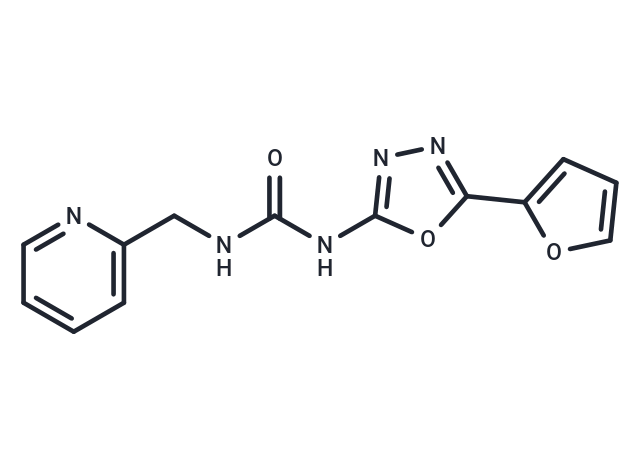Shopping Cart
- Remove All
 Your shopping cart is currently empty
Your shopping cart is currently empty

NK-252 is a potential activator of Nrf2. It has great Nrf2-activating potential.

| Pack Size | Price | Availability | Quantity |
|---|---|---|---|
| 2 mg | $33 | In Stock | |
| 5 mg | $52 | In Stock | |
| 10 mg | $72 | In Stock | |
| 25 mg | $150 | In Stock | |
| 50 mg | $256 | In Stock | |
| 100 mg | $470 | In Stock | |
| 1 mL x 10 mM (in DMSO) | $58 | In Stock |
| Description | NK-252 is a potential activator of Nrf2. It has great Nrf2-activating potential. |
| In vitro | NK-252 shows this effect with higher potency than OPZ based on the fact that the EC2 value (concentration for a 2-fold induction above background), calculated with linear extrapolation from the values above and below the induction threshold, is 20.8 μM for OPZ and 1.36 μM for NK-252. NK-252 has potential as an Nrf2 activator in hepatic cells. The protective effects of OPZ and NK-252 are examined against H2O2-induced cytotoxicity using Huh-7 cells to evaluate their antioxidant properties. The cells treated with OPZ or NK-252 show increased resistance to H2O2-induced cytotoxicity compared with control cells. The luciferase activity in Huh-7.5 cells treated with Oltipraz (OPZ) or NK-252 displays activation of the NAD(P)H quinone oxidoreductase 1 (NQO1)-ARE in a dose-dependent manner. Prototypical Nrf2 activators that include OPZ have been reported to protect microglial cells from H2O2-induced cytotoxicity [1]. |
| In vivo | Rats on a choline-deficient L-amino acid–defined (CDAA) diet that received OPZ or NK-252 exhibited decreased liver fibrosis scores compared to those on the same diet without these compounds. NK-252’s impact on fibrosis was dose-dependent[1]. CDAA diet-fed rats showed a nearly 20-fold increase in liver fibrosis area compared to rats on a normal diet (naive), which was significantly reduced by treatments (5.80% for OPZ, 6.20% for NK-252_low, and 4.97% for NK-252_high). Although NK-252 did not show antitumor effects in P388/S- and P388/VCR-mice when used alone, its combination with Etoposide notably enhanced the lifespan of mice with P388/VCR cancer, more than Etoposide alone[2]. Similarly, oral administration of NK-252 with Etoposide significantly prolonged the lifespan of P388/S inoculated mice, showing an improved therapeutic outcome compared to using Etoposide by itself. |
| Molecular Weight | 285.26 |
| Formula | C13H11N5O3 |
| Cas No. | 1414963-82-8 |
| Smiles | O=C(NCc1ccccn1)Nc1nnc(o1)-c1ccco1 |
| Relative Density. | 1.408 g/cm3 (Predicted) |
| Storage | Powder: -20°C for 3 years | In solvent: -80°C for 1 year | Shipping with blue ice. | |||||||||||||||||||||||||||||||||||
| Solubility Information | DMSO: 29 mg/mL (101.66 mM), Sonication is recommended. | |||||||||||||||||||||||||||||||||||
Solution Preparation Table | ||||||||||||||||||||||||||||||||||||
DMSO
| ||||||||||||||||||||||||||||||||||||

Copyright © 2015-2025 TargetMol Chemicals Inc. All Rights Reserved.